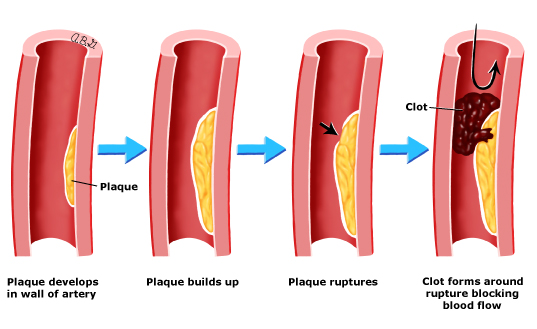As previously discussed, atherosclerosis is the disease process that very often associated with Coronary Heart Disease (CHD), stroke, heart attack and angina. Irrefutably, cholesterol concentration (especially low density lipoprotein,LDL) plays a role in the mechanism of plaque formation in atherosclerosis event. This is particularly true for those who have f
In order to reverse the ever increasing rate of cardiovascular disease incidence, we need to understand and correct the disease mechanism behind these modifiable risk factors. It is not the cholesterol reading that we need to lower down, but to investigate what underlying processes that initiate the rise of those unfavourable cholesterol. One significant mechanism is called oxidative stress. Both experimental and clinical studies have shown that oxidative stress caused damage to the inner walls of the arteries which is a common condition predisposing to atherosclerosis.
Oxidative stress is a phenomenon where there is an increased production of free radicals in the body. These free radicals are continuously released as a consequence of many chemical reactions that happen in the body. When there is an overproduction of these Reactive Oxygen Species (ROS), it stimulates processes that promote inflammation in the blood vessels. It also accelerates the disease process of atherosclerosis.
To illustrate further for better understanding, we take LDL cholesterol as an example. From our previous discussion we know that LDL cholesterol is one of the risk factors for cardiovascular disease. However, 50% of heart attack occurrence also happens in population with normal level of cholesterol. Studies now show that the reason for this is because LDL cholesterol is more detrimental in its oxidised form. Another word, oxidative stress promotes the conversion of LDL to more atherogenic/disease-causing state when there is an increased level of oxidative stress in the body. What is worse is that oxidised LDL itself is a stimulus of more oxygen radical formation, further increases oxidative stress in the body accelerating the inflammatory state in atherosclerosis.
Studies also observed increase ROS in other risk factors like smoking, diabetic and hypertensive population. So, once again it is not about the cholesterol reading. It is the underlying factor that’s more important to battle the disease. Other important mechanisms that can cause arterial damage and speed up the process of atherosclerosis are insulin resistance and inflammation.
So, be sure you keep yourself updated and educated with this knowledge to make a better choice in taking care of your health

